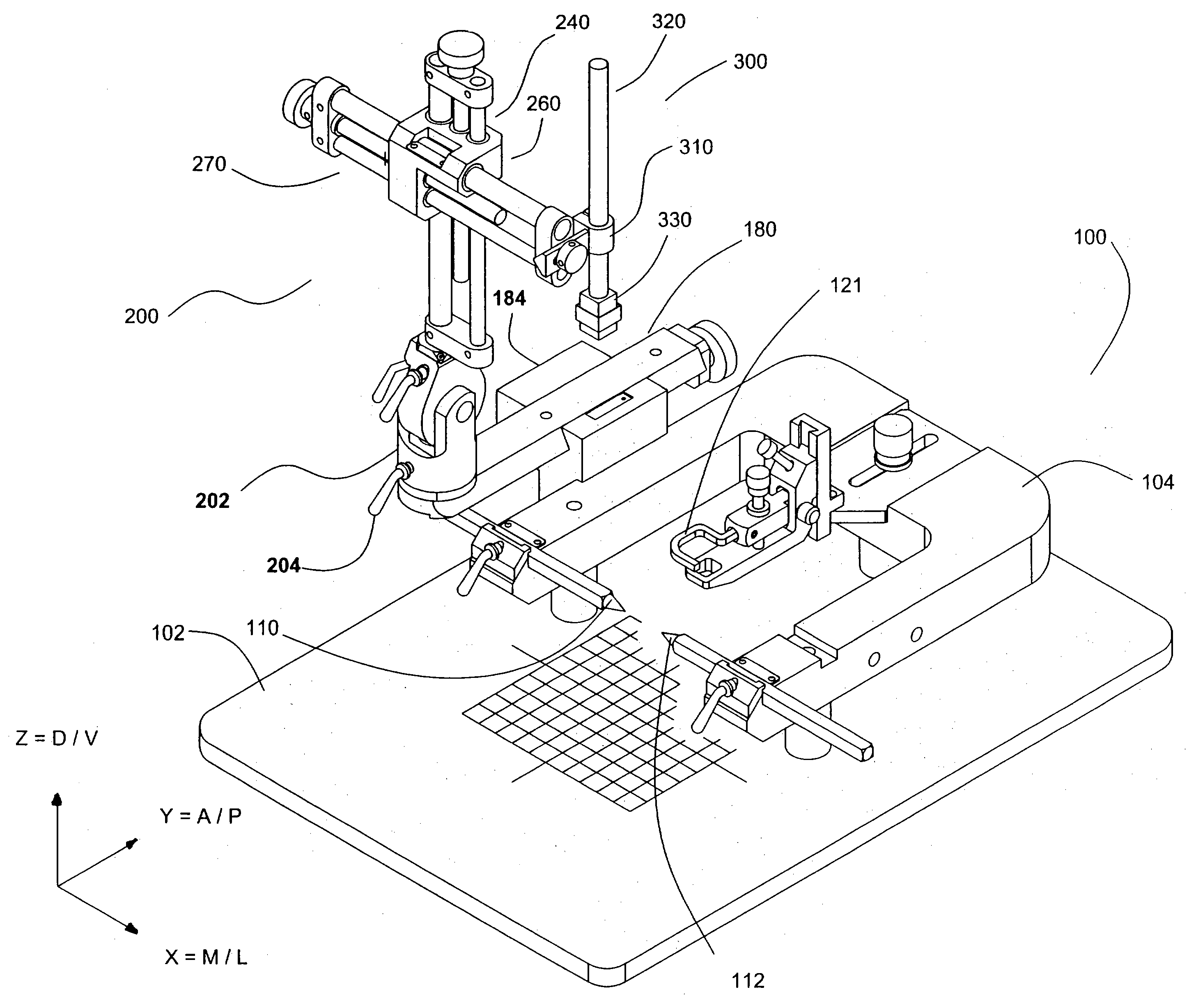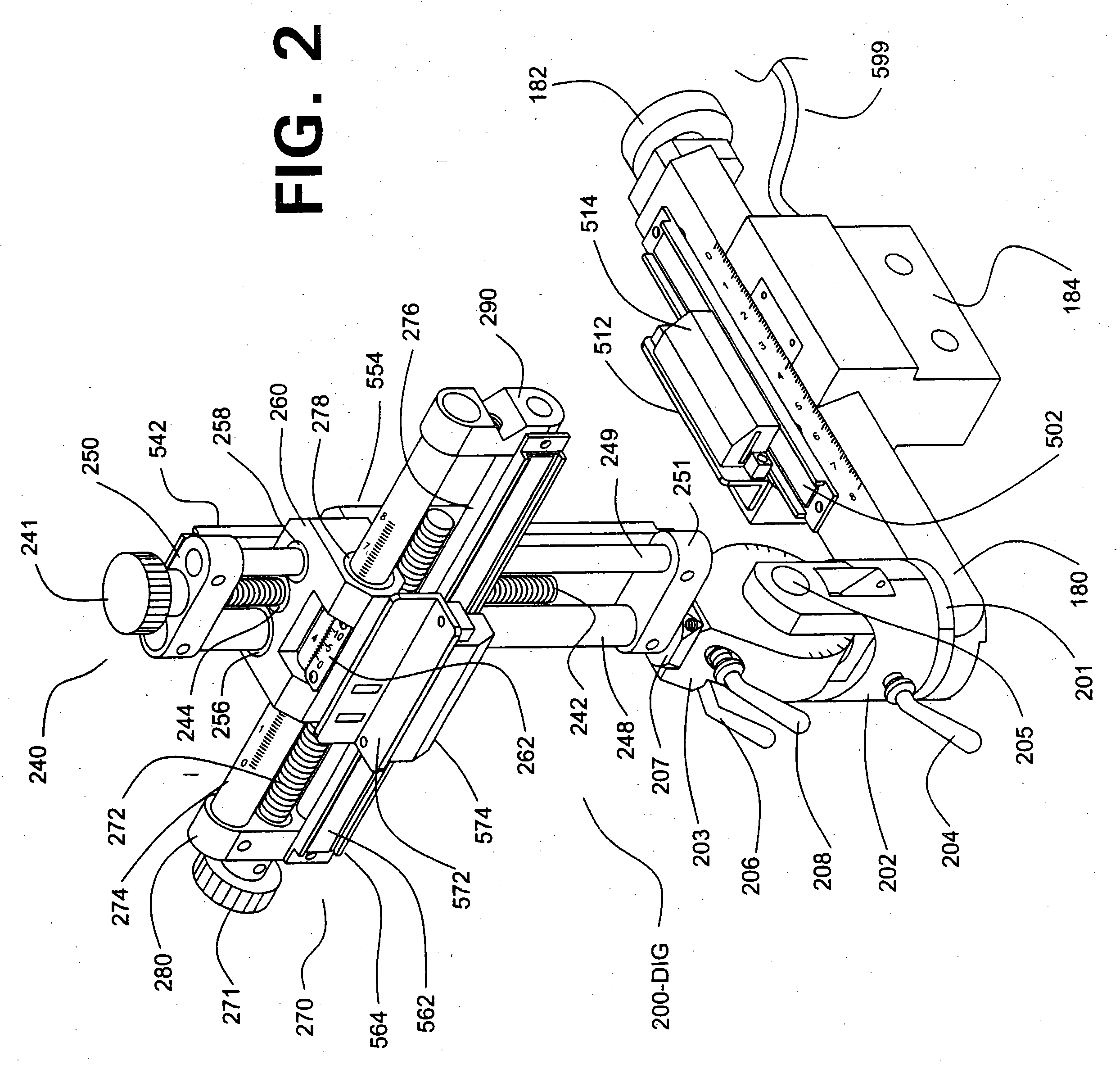Although the word “test” is occasionally used by some to refer to such procedures, in many situations the actual test(s) that will evaluate the effects of a surgical,
drug injection, or other procedure may not be carried out until days, weeks, or even months later.
Since unaided hands cannot provide the
degree of precision and control that is needed for most types of invasive neurological procedures, manipulators are designed to control and move instruments in a more careful and precise manner than can be achieved by hand.
Vernier manipulators are slow, tedious, and cumbersome to use, and they often lead to errors of measurement and / or calculation.
First, it is limited to “stereotaxic manipulators” as that term is conventionally understood and used by people who perform research involving small animals.
As used herein, “stereotaxic manipulators” also is limited to devices of the type that are used in research involving animals.
Such devices do not include or relate to instruments that are used in
surgery on humans.
Many large and highly expensive and sophisticated computerized instruments have been developed for use in human
surgery; however, those typically cost multiple tens or even hundreds of thousands of dollars, and they are not suited for use for studying animals on a crowded laboratory benchtop.
Alternately, a digital stereotaxic
manipulator might be provided without having a multi-lead data cable as a part of the
system, and can be provided instead with three small connectors, positioned at or near each of the electronic reader heads; however, it should be noted that any such connectors should not be coupled directly to the reader heads, since that might create a risk of gradually dislodging or misaligning the reader heads, if cable connectors must repeatedly (over a span of months or years) be plugged onto or pulled off of the head connectors.
However, those “
first generation” stereotaxic holders apparently were never patented.
They are large, bulky, and cumbersome, which means that they are difficult to place and use, on crowded benchtops in active research laboratories.
They are also expensive, costing over $10,000 for each unit.
In addition, no way was provided to replace an vernier manipulator, on an old stereotaxic holder having a perfectly good base plate and U-frame, with a retrofitted
manipulator system digital measuring components.
These new devices were less bulky and more convenient (and therefore substantially easier to position and use on a crowded
workbench) than the previous “first-generation” digital systems.
However, when a second-generation
system is used, any manual rotation of
turret base 202, after a bregma reading has been taken, will render exact repositioning of the manipulator 200 impossible, despite the existence of etched alignment marks on
turret base 202 and slide 180.
That is a useful option; however, it does not allow any accurate orthogonal measurements to be made, while the manipulator is in a rotated position.
Although this
system allows a second-generation system to be secured in a reliable and true vertical direction, any other angling of the
manipulator system, using
horizontal axis 205, will render the resulting measurements inaccurate and “pseudo-orthogonal”.
Those measurements and calculations were cumbersome, awkward, and time-consuming, especially if a test was being carried out on a crowded
workbench or under a hood, and they often caused errors in measurements.
Although those devices provided a major advance over stereotaxic holders having vernier scales, they suffered from several limitations and drawbacks, including their size and expense.
 Login to View More
Login to View More  Login to View More
Login to View More 


